The cultural form of a conventional weighing plant, a volatile sick is a highly decorative plant, widely used in landscape design.
A bright soil plant is known primarily by its unusual marble coloring leaves. High and thick curtains of perennial grass are able to decorate any, even the darker, a corner of a flowerbed or garden.
Thanks to the shadowability and unpretentiousness in care, decorative sick quickly grow up and is able to oust any plants.
About how to put sick on the site correctly so that it does not subsequently fight it and how to care for a perennial is in this selection of material.
Dry Peppercut, Plant Description
- Squeezing Peppercut Plant - Typical Representative of Perennial Perennial Herbs of the Umbrella Family. The decorative plant is, in fact, the cultural form of weed grass - sickness, and is considered to be less aggressive culture than the usual weed.
- Sick ordinary Podagraria Variegata (AEGOPODIUM Podagraria Variegata) is widespread in the glitstic and fir forests of Europe and Asia. In nature, the grass can be found on the edges, glades, ravines, in the thickets of shrubs or in the floodplain of the filler meadows.
- The perennial prefers the crude and shaded terrain, where the soil is quite wet and nutritious, for example, on loams or squeeces. The plant is very demanding for the fertility of the soil and "chooses" the rich humus and mineral elements, soil. In such, favorable for decorative perennial, the places sick quickly grow up in thick violent thickets.
- In Russia, sick is found in the European part of the country, in Caucasus and even in Siberia. Often, especially on cultural areas and processed areas (gardens, vegetable garden), the plant is associated with weed grass. But, with a skillful cultivation and artificial restriction of its distribution, a long-term decorative bush becomes a real decoration of any subsidency.
- In landscape design, sick is most often used as an active soil industry. The average life expectancy of the plant is about 50 years.

Dry Peppercut, Morphological Features
- According to the name of this type of Snyty, it is the leaves that are the most decorative part of the plant. Three-patch, with a sawd edge, they differ in an unusually beautiful color: a pistachio-green leaf plate and white, chaotic located, border. Moreover, such a marble color of the sheet, depending on the age, changes the shade. So, the young leaflets of sicky have a richly salad sheet color and cream edge.
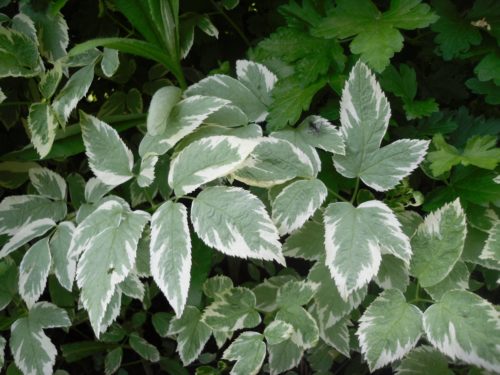
- The dimensions of the adult sheet on average are 5 x10 (width and length, respectively), the lower side of the sheet plate is slightly pubescent. Middle, to the stalk, the leaves grow on short stiffs, and distant - on more elongated shoots. Such multi-quality attaches to decorative embossed embossing extraordinary puffs and massive density.
- Motion and bright leaves are located on branching and reprehensive shoots that actively braid growth place, forming decorative covers, up to 20-50 cm high.
- Sniffing flowers are inexperial, small, collected in the inflorescence of an umbrella. Flowers plant in summer, in June, for 3-4 weeks. Often, gardeners intentionally remove all inflorescences in order not to spoil the attractive type of plant. Dish, landed in a thick shadow, does not bloom.
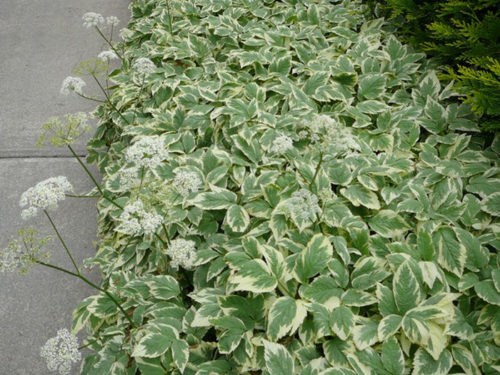
- During flowering, the revealed umbrella resembles a lush round cloud. This is explained by the fact that the inflorescence consists of a huge number of sickness flowers. Flowerines The perennial "throws out" long and reprehension, up to 50-100 cm high. The fruit of the culture is flat, small (up to 4 mm), double-free.
- The rhizome of grass is creeping and long, quickly growing throughout the plot, ousting both cultural and weed plants. Root roots not only in width, but in depth, reaching more than 40-50 cm. The branched root system is the main reproduction of culture.
- Snump is griming grows and develops very quickly, it is distinguished by high frost resistance, shadowishness and overall resistance. Sometimes, the roots of the plant can freeze the roots of the plant, but with the onset of heat, the culture pretty quickly restores the green mass.
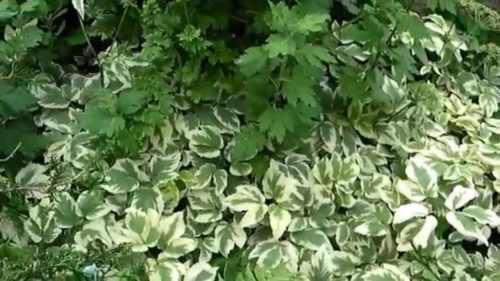
Dish Peppercut, Interesting Facts
- Snage decorative Peppercut has several synonyms. It is called differently: to sneeze, digesto, sickness, a dying room, a jaglitz or a bolt.
- According to Philologists, the name of the plant is associated with the ancient Russian word "snack" denoting any food. After all, edible leaves of Sonya were used to prepare salads, soups or boating since the times of Kievan Rus.
- In the past times, the merchants of the products shifted the goods to the leaves of Snyth to increase its shelf life. As it turned out, not in vain, since it is scientifically proven that the plant has bactericidal and antifungal properties.
- According to the legend, the famous hermit of the Rev. Seraphim Sarovsky, in the period of hermitting, lived in the forest and eats on herbs - sick.
- During the Great Patriotic War, in the canteens of Moscow for the preparation of some dishes was also popular with the greens of Snyty.
- Flowering sick loved to see the artist I. Shishkin, which was reflected in his several schudes.
Dish Peppercut, Growing Features
- Spenting sick prefers a shady terrain, so it can be safely planted under the trees and shrubs, in thick squares and parks, on the flower beds on the northern side of the site. In addition, in the shade, the plant weakly forms the flowerons, which significantly improves the decorativeness of the culture.
- If you put sick on the sunny plot, the plant will be less beautiful and decorative. In addition, in such conditions, the perennial will need regular irrigation, otherwise with the time "will wage."
- For a TV in order to initially limit the area of \u200b\u200ba rapidly propagating culture, protective measures must be taken when landing. To this end, the grass is planted into underground containers or tin tanks. Limit the aggressive growth of perennial roots and, at the same time, to form more thick and dense slices, also plastic containers with perforated bottom or slices, covered around the plant to a depth of at least 30 cm.
- Sick decorative speaks well on a fertile, rich in the organic garden soil with an acidic medium. Therefore, before landing it is important to qualitatively prepare the soil: Plot to switch, remove weeds, enrich fertilizers (make humus, manure, compost).
- The moisture culture is perfectly taken for in lowlands, where moisture accumulates, in areas near the water bodies or the drainage system. Increased humidity positively affects the decorativeness of the leaves: they become brilliant, bright and large.
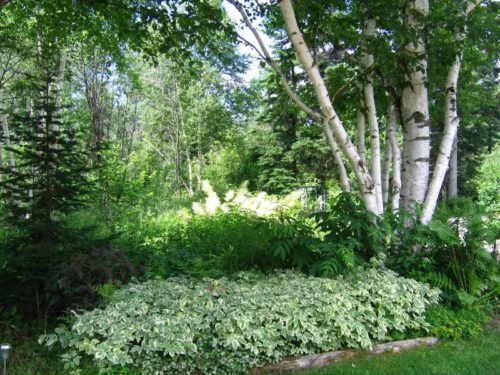
Sick Peppercut, planting plants
- Planting plants is carried out in spring or autumn.
- To sit sick on the plot, a shallow landing pit is preparing, which is placed a piece of the root of the plant. The pocket diameter must be counted taking into account the installation of root growth limiters (slate siblis, tin). If some solid container is used, several drainage holes need to be made in the bottom.
- The rhizome when landing slightly deepen into the ground and fall asleep on top of the earth, periodically sealing it in order to avoid the formation of air "pockets".
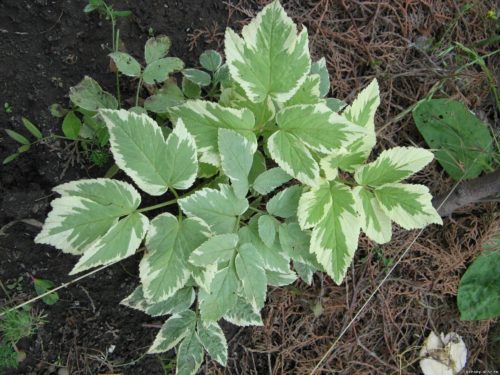
- Acquired in a store or nursery, a seedling in a plastic container, is guaranteed to take root, since the roots during landing are not damaged and not injured. In addition, the container with soil already, as a rule, contains fertilizers.
- In general, the "relative of the weed", sick, is distinguished by rapid survival and rooting. This confirms the fact that even a naked root, planted into the ground, will soon germinate and start increasing the decorative green mass.
Dish Peppercut, Plant Care
Without exaggeration, it can be said that it is nourished with a nourishment - one of the most undemanding decorative cultures.
- Dish needs regular irrigation, especially in the arid and hot period. At the same time, a long oversupplication (stagnation) moisture is not desirable.
- To contain a voyal squeeze in an alturized form, gardeners are recommended to conduct periodic sanitary pruning of the plant. At the same time, all dried, damaged and sick shoots are removed. Some experts advise periodically to update the greens, completely making the grass planting.
- In order to preserve the decorativeness of embossing bushes and prevent the rebirth of the decorative plant in a wild form, it is important to regularly remove the patterns with inflorescences. From the vulneered seeds will grow up the view of the ordinary Sonya.
- In the case of the scarce of the soil composition (which can adversely affect the appearance of perennial), organic and mineral fertilizers are introduced into the ground.
- The frost-resistant culture without problems makes the temperature to -39 0 C and does not require additional shelter for the winter.
- As for diseases, in the dry time of the year, the plant may be attacked by the Tsley or a web tick. The first signs of the appearance of pests will be swirling sheets of sicky. To combat insects, appropriate insecticides are used (Aktellik, Aktara, Match). If spots appear on the leaves - there may be a plant with anthyraznosis or mildew. Then there are fungicides, like Sorrow, Maxim, Svitch, Chorus, Radomil Gold, etc.).
Dish Peppercut, reproduction of the plant
- It is breeding to sick in a vegetative and seed method.
- Seeds rarely spread rarely, as it does not repeat the decorative signs of parental individuals and grows with ordinary weeding grass.
- The reproduction of the volatile dream is carried out, as a rule, the division of the root. To do this, it is enough to separate the shovel piece of the root (or bush) and put it on a new place.
Dish Peppercut, Meaning and Application
- Dish is considered an edible plant, her leaves and stalks are added to hot dishes (instead of cabbage), salads, and marinate, dried and sissing for the winter.
- During flowering, lush nectural inflorescences attract insects. Dish rightfully considered a good honey.
- Green grass of grass is often used and harvested on a cattle.
- The presence of vitamins (especially many ascorbic acid) of carotene, carboxylic acids, proteins, kumarina, mineral salts, essential oil and bioflavonoids predetermined the therapeutic value of many years of decorative grass. At the same time, it should be noted that this, the spelling type of sickness, the healing qualities are much weaker than the sickness of ordinary.
- Decorations, compresses and chassis-sumps are widely used in folk medicine for the treatment of avitaminosis, enhance immunity, wound healing and removal of fungal diseases. Culture has anti-inflammatory, painful, regenerating, sedative effect. Means based on Sonya contribute to the removal of toxins from the body, help in the treatment of musculoskeletal system (arthritis, rheumatism, gout, arthrosis, etc.). Herbal beams have choleretic, diuretic and softening properties. Folk characteristics recommend the use of medicinal dreams with diseases of diathesis and face inflammation of the skin. In any case, before the use of drug-based drugs, a doctor's consultation is required. It is also important to consider the existing contraindications to the application of fees: pregnancy, lactation period, individual intolerance to the product.
- Due to the motley decorative foliage is often used in landscape design.
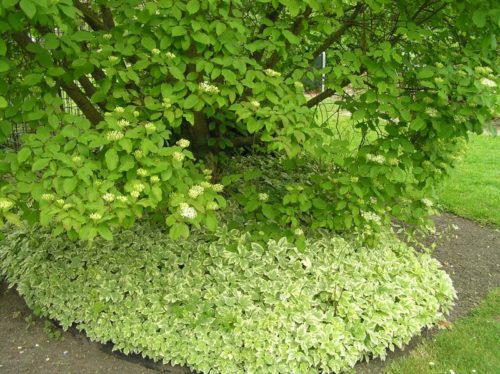
Dish Peppercut in Landscape Design
- Not every plant will be able to actively grow and develop in shadows, for example, under the crown of trees. In such landscapes sick - just a find! Decorative grass "highlights" and fills in dark areas, forming a dense and factory "live carpet."
- It looks great for a volatile sick along the borders and tracks, on the foreheads of flower beds or mixboraders. Especially the marble foliage looks in the background of the traditional greenery of other plants.
- Squeezing sick decorative on the flowerbed or alpine slide, it is important to initially limit its further growing so as not to disturb the general composite plan of the landscape.
Thus, squeezing the voyage is undeservedly called the weed and useless grass. With skillful cultivation and control, the culture of the aggressor will turn into obedient decorative grass on the site.
The main advantage of the decorative-deciduous perennial is unusually gradious and spectacular coloration of foliage. And taking into account the unpretentiousness and endurance of culture, it will be sick to dream for many flower products with a real "discovery".


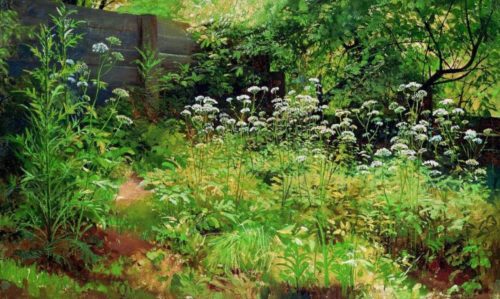
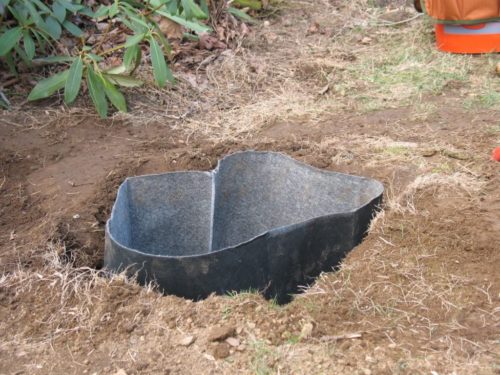
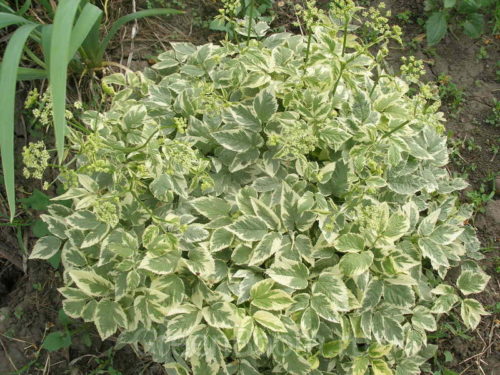
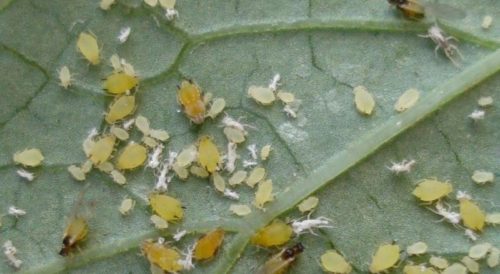
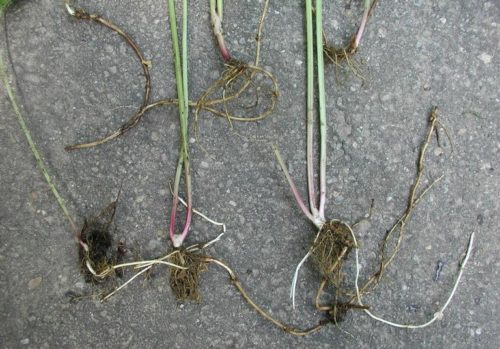
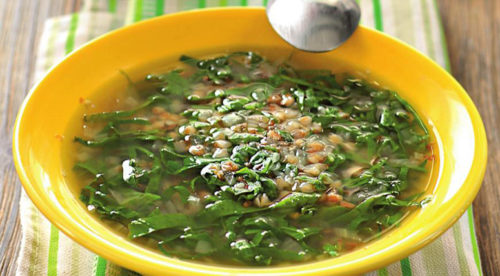
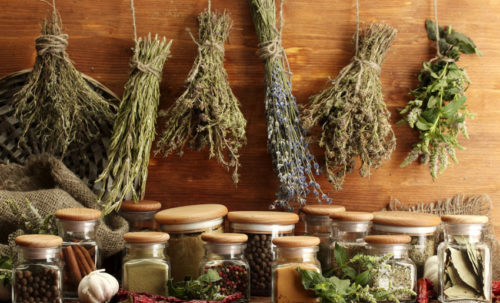
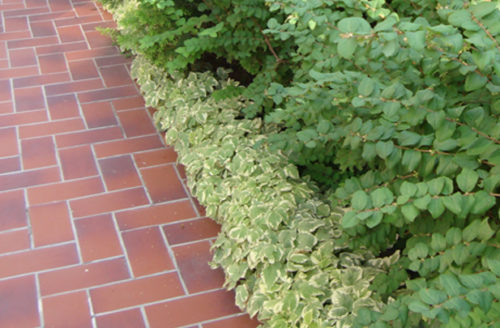
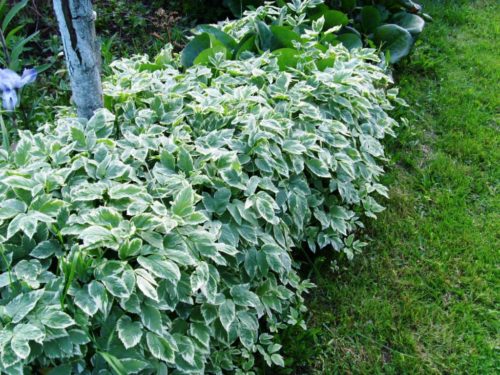
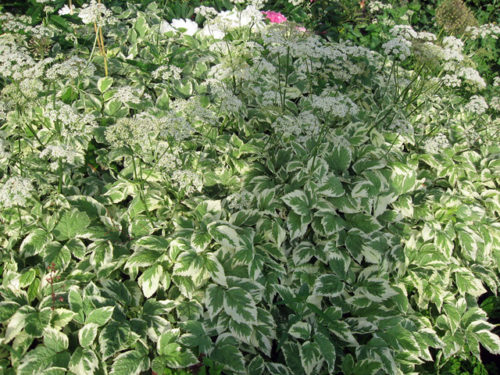
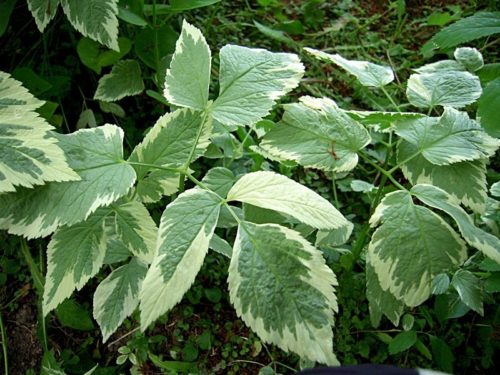
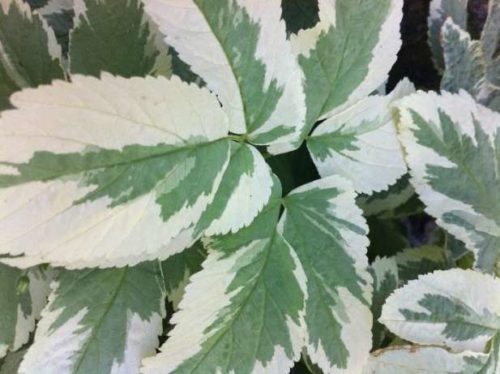
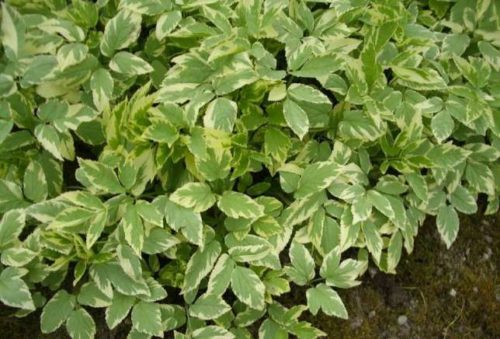
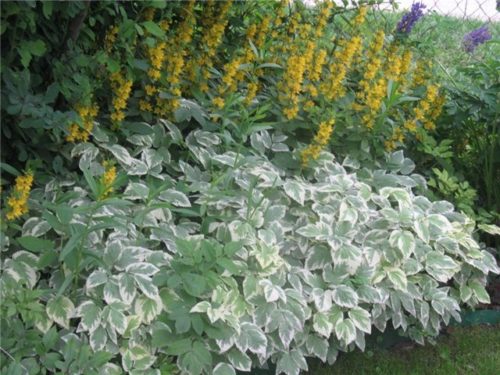
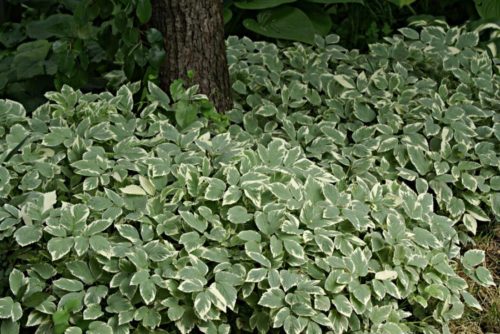
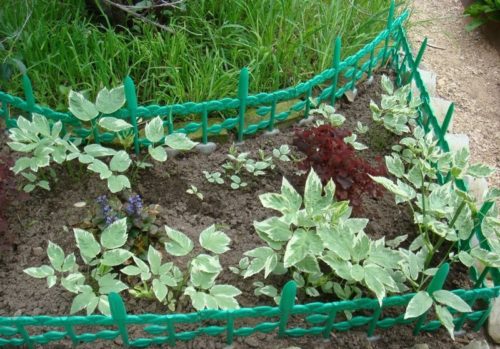












 Start a discussion ...
Start a discussion ...